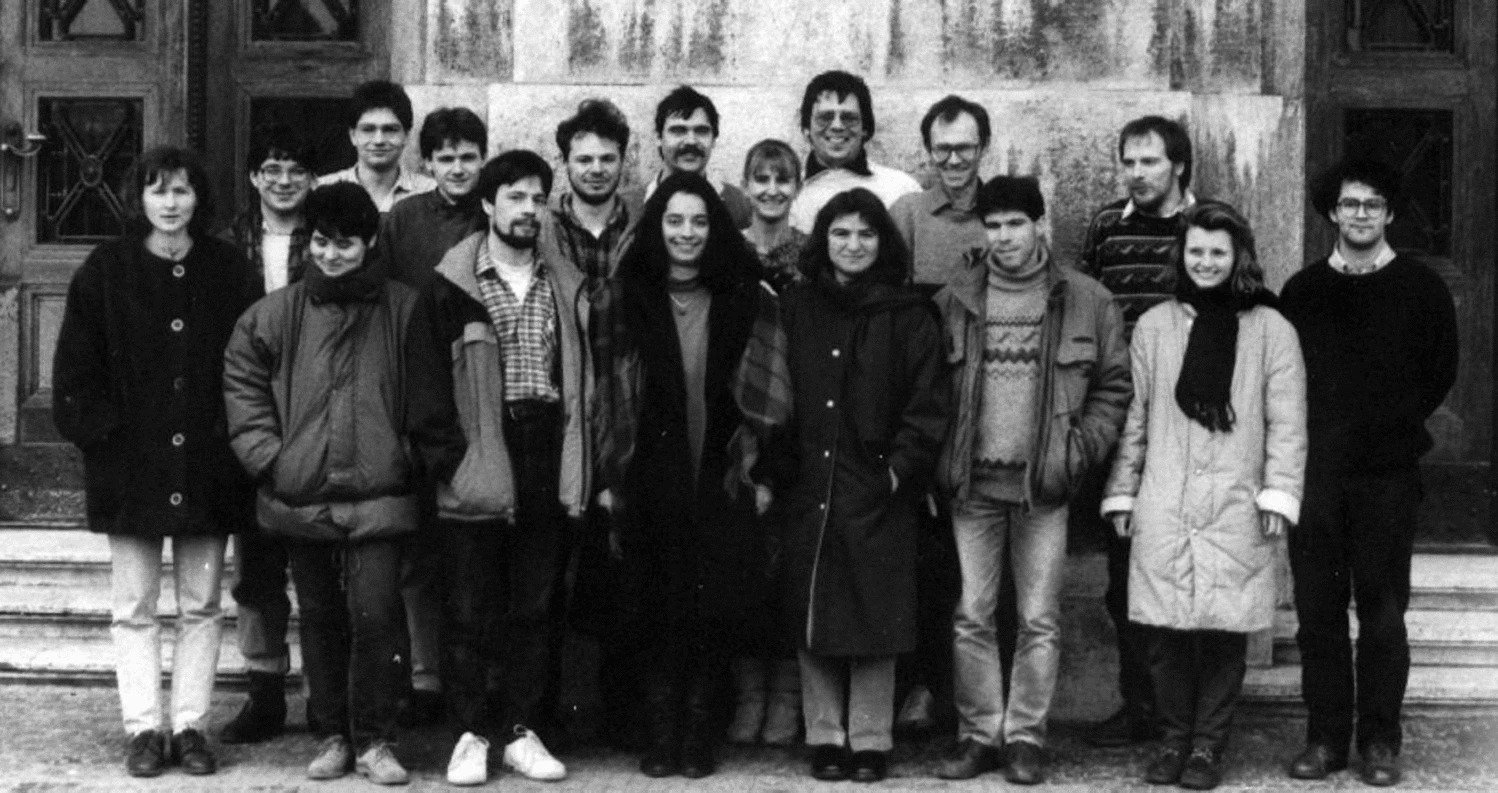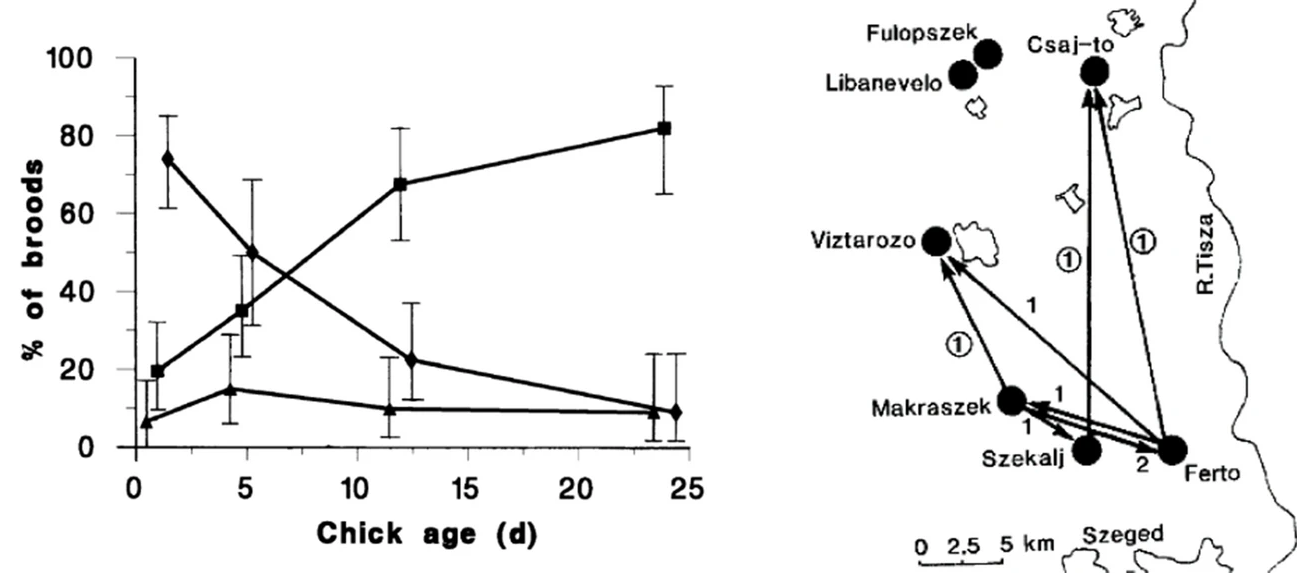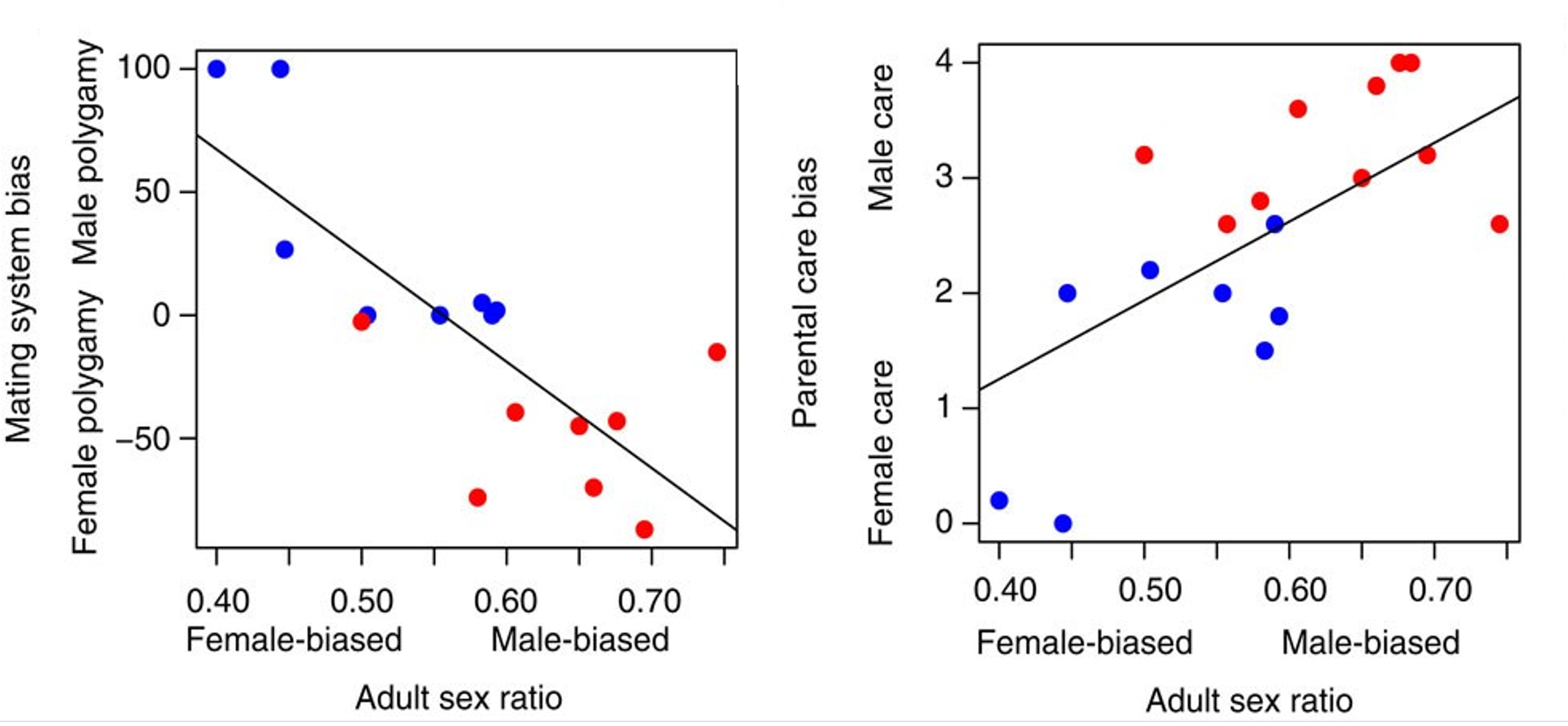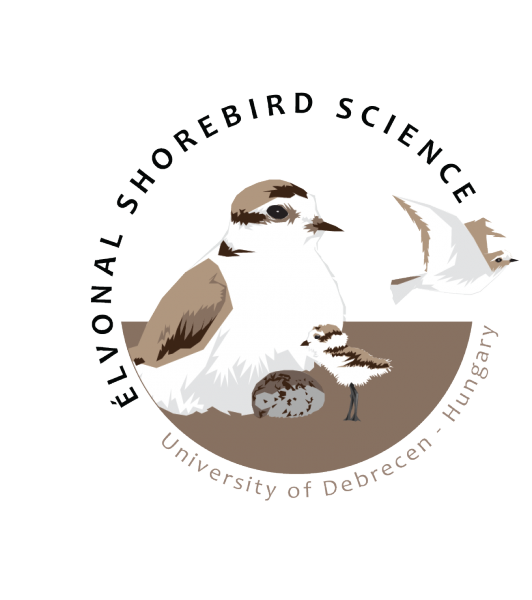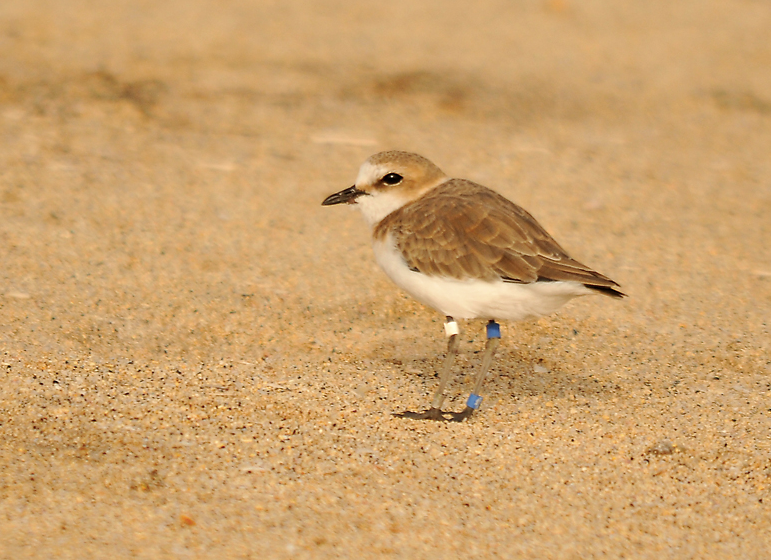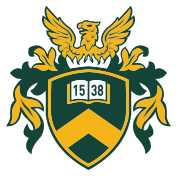My journey as a researcher began in Debrecen in the late 1980s when the study of reproductive strategies was an exhilarating frontier in the field of behavioral ecology. Fascinating discoveries were emerging, unveiling a rich tapestry of mating behaviors and mate choices among insects, birds, and mammals. It was in 1989 that I took the initiative to organize an informal gathering at Kossuth University, which later evolved into the University of Debrecen. From this modest but passionate workshop, the Behavior Ecology Research Group, affectionately known as VÖCS, emerged.
Male Kentish Plover incubating eggs at sunset as part of their unique reproductive strategy. Incubation duties are shared with females to enhance survival; males predominantly incubate during the night, ensuring protection and temperature regulation for the developing eggs.This marked the beginning of my exploration into shorebirds, specifically the Kentish plover. My mission was to unravel the intricacies of their breeding behavior through individual bird marking, testing the tenets of life history theory, ecology, and site fidelity. These seemingly unremarkable birds, nesting on the ground in Southern Hungary, proved to be ideal subjects. Their open habitats allowed for easy observation of adult-plover interactions, and their amiable nature made them accept the presence of an observer.
Members of VÖCS. Back row, starting at the third person from left: Szabolcs Lengyel, Gábor Noszály, Tibor Fuisz, Zoltán Barta, Hédi Mező, István Karsai, Tamás Székely, Tibor Szép, András LikerIn the early stages, my toolkit primarily consisted of behavioral observations, but in the early 1990s, I began to embrace field experiments, aligning with the prevailing mantra in behavioral ecology. These experiments allowed us to rigorously test hypotheses and disentangle cause-and-effect relationships. My research initially focused on parental care but gradually expanded to include mating systems, pair bonds, habitat preferences, and more recently, sex roles in reproduction. The interdependence between mate search, pair bonding, and parenting became a cornerstone of my work, combining mathematical theory with observations of plovers in their natural habitat.
Brood care pattern in relation to chick age (left) and movement of Kentish plover pairs (right, uncircled numbers) and divorced individuals (circled numbers) in Southern Hungary (Székely & Lessells 1993).Adult sex ratio is associated with (left) mating system bias , (right) parental care bias. Panels display species values (red for reversed and blue for conventional sex roles; Liker, Freckleton, Székely, 2013).In parallel, I developed the framework for combining detailed data from several plover populations into a phylogenetic framework to understand parental care (Vincze et al. 2013). This concept later branched out into a 5 year ELVONAL project that targets collecting data in dozens of shorebird populations in the field, and use these data to address important – and yet untested – hypotheses of sex role evolution. Two key insights emerged from these comparative studies. First, different facets of reproductive strategies often co-evolve, emphasizing the importance of considering pair-bond strategies and parenting behaviors when studying mate selection. Second, we found that fertilization modes in ectotherms and adult sex ratios in endotherms were influential predictors of reproductive strategies.
My fascination with sex ratios emerged alongside the exploration of parenting and mate fidelity in Kentish plovers. We embarked on a journey to understand why some female plovers abandoned their families. We found that the number of males and females in breeding populations played a crucial role in shaping brood care patterns, contradicting prevailing theories about female care in internally fertilizing species. We developed innovative methods to estimate adult sex ratios and discovered male-skewed sex ratios in some plover populations. These findings challenged established theories and sparked new discussions about the role of sex ratios in shaping reproductive strategies.
Stronger sexual selection on males associates with female-biased parental care and vice versa . The intensity of sexual selection is indicated by three indices: ΔI (opportunity of selection), ΔIs (opportunity for sexual selection) and Δβss (Bateman gradient; Mokos et al. 2021).Beyond leading a multi-pronged research on sex ratio evolution, I also push the frontiers in sex role evolution. A key paper we published in 2021 tested a common assumption of sex roles studies in that the size difference between the male game (sperm) and the female game (the eggs) did not predict sex role variation. Currently our team is exploring the roles of ecological, life history and demographic causes of sex role variation. This cutting edge research has a great potential to make a major contribution to the understanding of sexual selection, breeding systems and parental behaviour.
Székely, T., A. J. Moore, and J. Komdeur. (eds.) 2010. Social Behaviour - Genes, Ecology and Evolution. Cambridge University Press.Fairbairn, D., W. Blanckenhorn, and T. Székely. (eds.) 2007. Sex, Size & Gender Roles - Evolutionary Studies of Sexual Size Dimorphism. Oxford University Press.Précsényi, I., Z. Barta, I. Karsai and T. Székely. (eds.) 1995. Basic research planning, statistical and project evaluation methods in supra-individual biology. Kossuth Egyetemi Kiadó. (in Hungarian)In 2010, I established a conservation organization in West Africa called the Maio Biodiversity Foundation (FMB) and served as its President from 2010 to 2018. FMB's core mission is the protection of wildlife and natural habitats, accomplished through active engagement with local communities in the pristine islands of Cape Verde, specifically Maio. Our initiatives encompass safeguarding sharks, whales, sea turtles, and various bird species.
A Nurse shark in the surrounding waters and a Kentish Plover on Maio, Cape VerdeFrom left to right (2012): Franziska Koenen, Nadia Vitlin, Lisbeth Verlinden, Katie Zdilla, Tamás Székely, and Eusa Ribeiro.Since its inception in 2010, FMB has experienced rapid growth and currently employs a dedicated team of 10 professionals. Moreover, we have created employment opportunities for over 100 individuals on Maio and have provided training to more than 70 international volunteers. One of our notable achievements was the expansion of protected areas in 2015.
Foreign Member of Hungarian Academy of Sciences - 2019
Royal Society Wolfson Merit Award - 2017
Honorary Professor, Debrecen University, Hungary - 2017
Visiting Professor, Beijing Normal University, China - 2017
Fellow & Focal Group Leader, Advanced Institute of Berlin, Germany - 2017
NWO Visiting Professor, University of Groningen, Netherlands - 2015, 2011
Visiting Professor, Sun Yat-Sen University, Guangzhou, China - 2014
Humboldt Award, University of Göttingen, Germany - 2012
Mercator Visiting Professor, University of Bielefeld, Germany - 2012
Hrdy Visiting Fellowship, Harvard University, USA - 2006
Professor Dr. Tamás Székely, Ecologist, Biologist, Professor, Alpha Wave , 2022 (in Hungarian)Darwin got sexual selection backwards, research suggests, The Conversation, 2021Mating Systems and Sex Roles, National College of Mexico, 2020 APPOINTMENTS
2023-present Professor and Director of Debrecen Biodiversity Centre
2007-present Professor of Biodiversity, University of Bath
2000-2007 Senior Lecturer & Reader in Evolutionary Biology, University of Bath
1995-2000 Post-doctoral Research Associate, University of Bristol
1988-1995 Research Scientist & Lecturer in Animal Behaviour, Kossuth University
1986-1988 Research Assistant, Hungarian Ornithological Society
EDUCATION
1986 Ph.D. in Animal Ecology - Kossuth University, Hungary
1983 Diploma and Teaching Certificate in Biology and Chemistry - Kossuth University, Hungary

